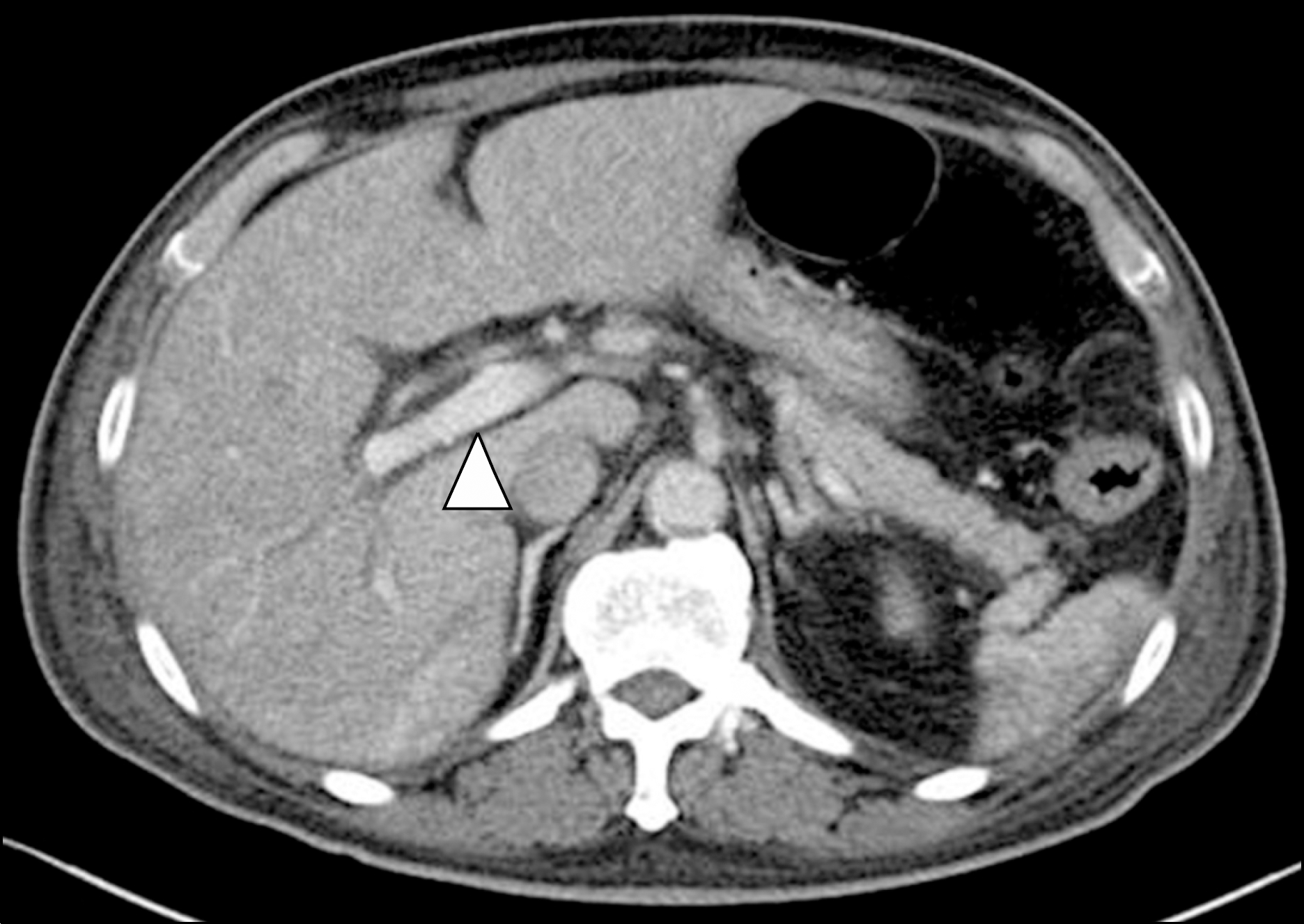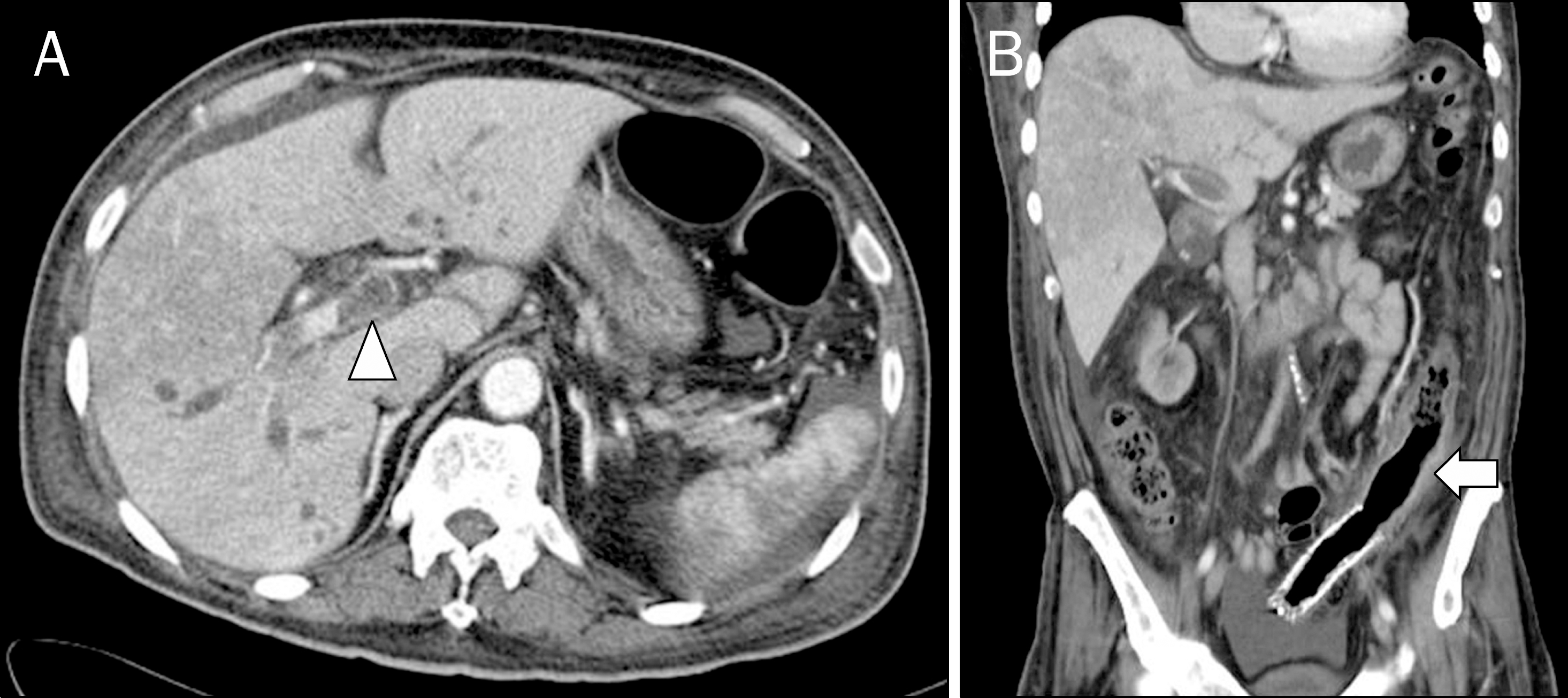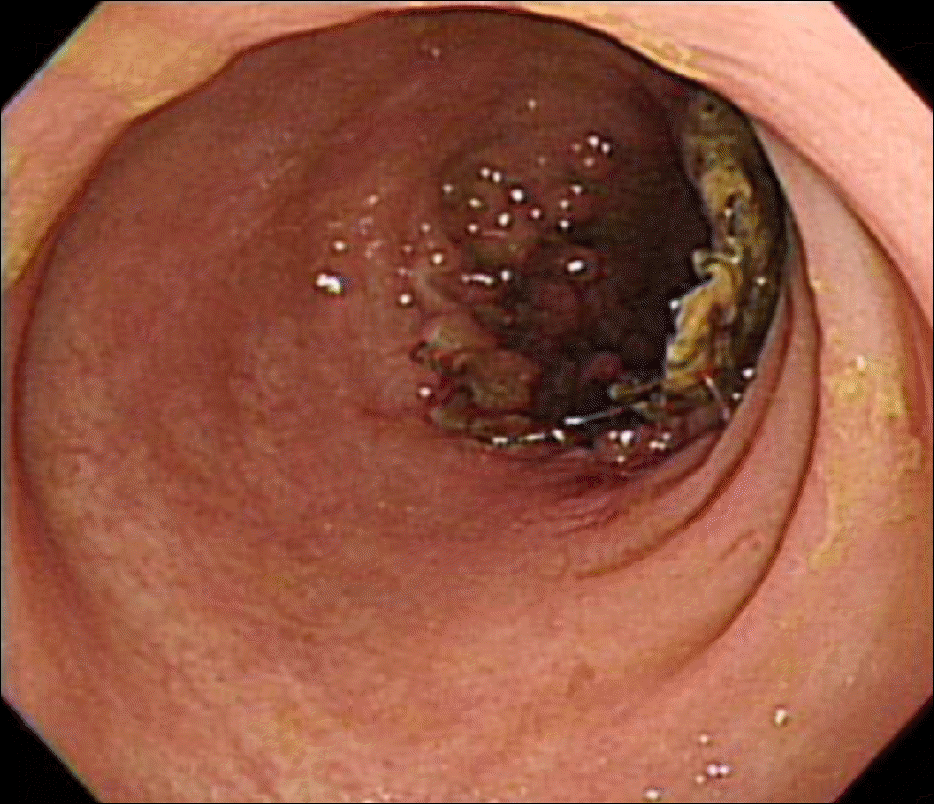Abstract
Portal vein thrombosis is an uncommon but an important cause of portal hypertension. The most common etiological factors of portal vein thrombosis are liver cirrhosis and malignancy. Albeit rare, portal vein thrombosis can also occur in the presence of local infection and inflammation such as pancreatitis or cholecystitis. A 52-year-old male was admitted because of general weakness and poor oral intake. He had an operation for colon cancer 18 months ago. However, colonic stent had to be inserted afterwards because stricture developed at anastomosis site. Computed tomography taken at admission revealed portal vein thrombosis and inflammation at colonic stent insertion site. Blood culture was positive for Escherichia coli. After antibiotic therapy, portal vein thrombosis resolved. Herein, we report a case of portal vein thrombosis with sepsis caused by inflammation at colonic stent insertion site which was successfully treated with antibiotics.
Go to : 
References
1. Sobhonslidsuk A, Reddy KR. Portal vein thrombosis: a concise review. Am J Gastroenterol. 2002; 97:535–541.

2. Valla DC, Condat B. Portal vein thrombosis in adults: pathophysiology, pathogenesis and management. J Hepatol. 2000; 32:865–871.

4. Cheung DY, Kim JK, Jo DH, et al. A case of portal vein thrombosis associated with acute pancreatitis and cholangitis. Korean J Gastroenterol. 2005; 46:60–65.
5. Kim JH, Lee DG, Park SB, et al. A case of portal vein thrombosis in acute necrotizing pancreatitis treated with low-molecular-weight heparin. Korean J Med. 2013; 84:76–80.

6. Park SN, Yim JK, Kim YM. Portal vein thrombosis with a lung abscess. Korean J Med. 2012; 82:67–72.

8. Rajani R, Björnsson E, Bergquist A, et al. The epidemiology and clinical features of portal vein thrombosis: a multicentre study. Aliment Pharmacol Ther. 2010; 32:1154–1162.

9. Chawla Y, Duseja A, Dhiman RK. Review article: the modern management of portal vein thrombosis. Aliment Pharmacol Ther. 2009; 30:881–894.

Go to : 
 | Fig. 1.Abdominal CT scan taken two months before admission. There is no evidence of portal vein thrombosis (arrowhead). |
 | Fig. 2.Abdominal CT scan at admission. (A) Portal vein thrombosis (arrowhead) is present in left portal vein. (B) Inflammatory fibrotic stricture is seen at anastomosis site but stent patency is maintained in de-scending colon (arrow). |




 PDF
PDF ePub
ePub Citation
Citation Print
Print




 XML Download
XML Download